A 501(c)(3) charitable organization. Copyright © 2006 to Present OC Hiking Club/Hike Everywhere / Mike C, All rights reserved. Distribution or publication of this site's content without prior written permission is prohibited.
BUGS, SPIDERS & SCORPIONS IN SOUTHERN CALIFORNIA
Spiders in Southern California
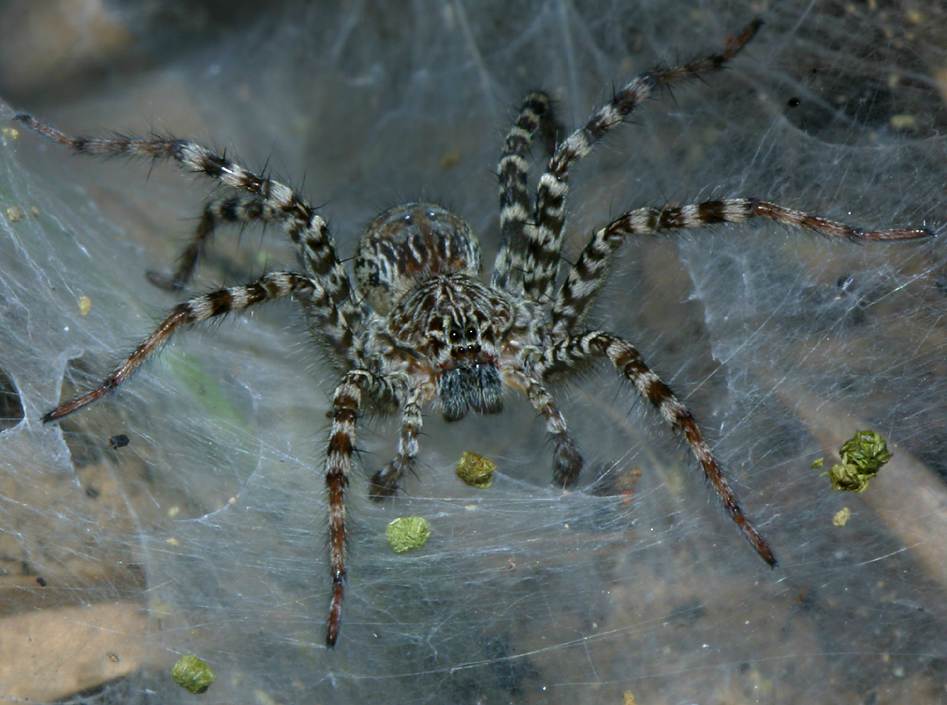
You are about as likely to be bitten by a spider while hiking in Southern California as you are of meeting Spiderman on the trail.
Escape the spiders and get hiking - The most dangerous spiders in California (Black Widow & Recluse Spiders) prefer your garage or an old firewood.
How to Avoid Spider Bites
Bites generally occur when a spider is stepped on, or while dressing when a spider is inside a sleeve or pant leg.
Most spiders don’t prey on people or attack. Many have fangs but they are incapable of piercing a person’s skin.
If you think you have been bitten by a dangerous spider, go see a doctor immediately.
By practicing caution, the odds of being bit on the trail are low:
- Don’t pick up or try to touch a spider!
- Don't reach or step in cracks in rocks where you can't see first
- Check your boots and shoes; shake out your clothes
- Keep your tent and bags zipped shut; boxes sealed
- Don't walk around barefoot
You may see tarantulas on the trail; though able to deliver a bite, their main defense is brushing their bristly hairs with their legs into the eyes of predators.
What to do if you are Bitten by a Spider
Bites are rare, but if you do get bit remember to:
- Go see a doctor immediately
- Remain calm; ask for help.
- Find a cool and or comfortable spot to rest while awaiting help.
- Clean the wound with soap and water; use wet cool compresses.
- Observe for symptoms which require immediate medical attention (antitoxins) such as profuse sweating; trouble swallowing, blurry vision, loss of muscle control, difficulty breathing.
Spiders do not always inject venom when they bite. The main concern when being bitten by a spider is sometimes infection or allergic reaction.
Species of Spiders in Southern California
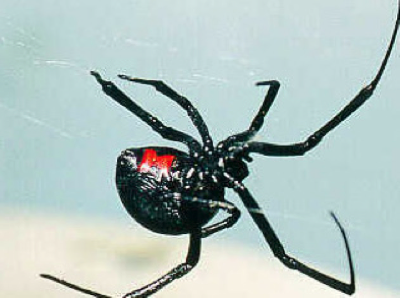 |
Black Widow Spider - Dangerous Female spider bite is dangerous to humans, see a doctor immediately. Symptoms of bite include localized pain, followed by severe muscle cramps, abdominal pain, muscle weakness and tremors. Severe bite symptoms are nausea, vomiting, dizziness, fainting, chest pain and breathing problems. |
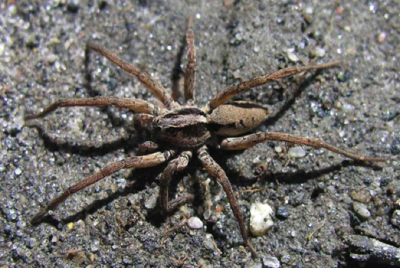 |
Wolf Spider Symptoms of bite include: Swelling, mild pain and itching |
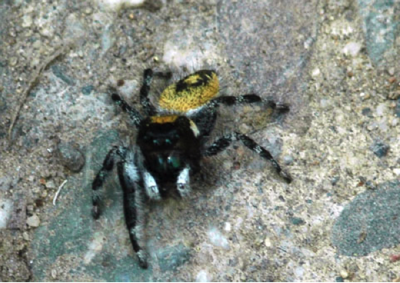 |
Jumping Spider Symptoms of bite include: pain, itching, redness and significant swelling. Other symptoms may include painful muscles and joints, headache, fever, chills, nausea and vomiting. The symptoms usually last about 1-4 days. |
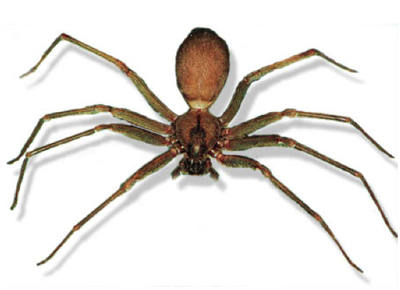 |
Recluse Spiders - Dangerous The brown recluse spider does not live in California but there are related species here. Recluse spiders prefer dark and out of the way areas. If bitten, see a doctor immediately. Symptoms of bite include: pain, burning, a blister that develops into an ulcer, a rash fever, chills, nausea, vomiting, muscle aches and hemolytic anemia. |
 |
Tarantulas Handling a tarantula can cause irritation to the skin because of the bristles on their legs Bites can be painful but do not usually produce any harmful symptoms. |
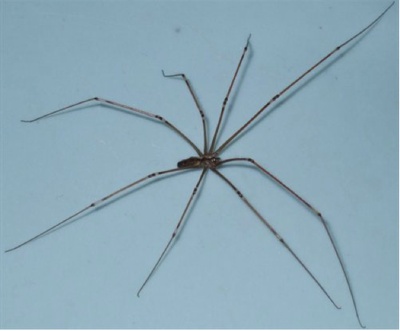 |
Daddy Longlegs These spiders are said to be - not dangerous. |
Scorpions in Southern California
Scorpions are NOT prolific in California, but have been observed by members of the OC Hiking during events in Peters Canyon (rarely seen), Santiago Oaks (occasionally seen), Crystal Cove (rarely seen), and Joshua Tree (frequently seen) at the Indian Grove campsite.
The greatest species diversity of scorpions occurs in California and Arizona; only one North American species (Centruroides) is potentially dangerous. All are nocturnal hunters which deliver neurotoxic venom via a stinger in their tail; resulting in pain, numbness, and swelling.
The real danger lies in an allergic reaction to a sting, just as in the case of bee stings.
If possible, kill the scorpion and preserve the body for identification, careful while handling as dead scorpions can still sting.
Bites are rare, but if you do get bit remember to:
Remain calm; ask for help. Find a cool and or comfortable spot to rest while awaiting help. Clean the wound with soap and water; use wet cool compresses. Observe for symptoms which require immediate medical attention (antitoxins) such as profuse sweating; trouble swallowing, blurry vision, loss of muscle control, difficulty breathing.
By practicing caution, the odds of being bit are practically zero:
- Don't reach or step in cracks in rocks where you can't see first
- Check your boots and shoes; shake out your clothes
- Keep your tent and bags zipped shut; boxes sealed
- Don't walk around barefoot
- Don't play with scorpions, leave them alone
Bee Stings

Bees and wasps inject venom through their stinger into the victim’s skin. Bee’s have barbed stingers and leave the stinger along with the venom sack attached to the skin. Wasps, Hornets, and Yellow Jackets do not have barbed stingers and thus usually do not remain in the skin. Unlike Bees, they may sting multiple times.
It is best to treat Bee stings by removing the stinger by gently scraping it away. Do not pull out the stinger with tweezers as the act of grabbing may inject more venom. Most people will have only a painful and reddened reaction at the site of the sting. Swelling and itching may also occur. The pain usually disappears within a few hours.
Three percent of people develop an allergic reaction these stings. Reactions may include vomiting, nausea, diarrhea and dizziness. Less than one percent of people develop a life-threatening allergic reaction known as anaphylaxis. In anaphylactic reactions, victims experience wheezing, difficulty breathing, and a drop in blood pressure that leads to shock if not treated promptly. These types of reactions usually occur within minutes of the sting. Those with this allergy will have a worsened reaction with every subsequent sting. Anyone with this known condition should talk to their doctor about taking special precautions including carrying an injectable form of the drug epinephrine. One or two injections may be required. Your doctor can show you how to inject the drug yourself.
Around 50 people are killed each year in the U.S. due to severe anaphylactic reactions due to bee stings. If you know you have this condition, take actions ahead of time as hiking in remote areas can limit response time of medical help. If you notice swarms of agitated bees, leave the area.
Ticks

Ticks are blood feeding parasites of mammals and are often encountered in brush or grasses along hiking trails. Carbon dioxide and heat are attractants and signal ticks that a potential host is near. Once the tick has transferred itself to a host, the tick secretes a cement–like substance that glues it to the skin and feeding begins.
When bitten, a mild to severe sting is felt along with some skin reddening near the bite site. Ticks are small, ranging in size from just visible to around a 1/8inch in diameter. If you find a tick, you should remove it with tweezers by grasping is close to the skin and applying a steady upward pressure to make sure the entire tick is pulled free. Do not use heat to remove the tick. Apply antiseptic to the affected area.
Although tick bites can cause Lyme disease, this is much less prevalent in California than elsewhere in the U.S.
Some suggestions to avoid ticks are:
- Wear long pants and long-sleeved shirts. Tuck pant legs into boots or socks and tuck shirts into pants.
- Wear light-colored clothing so ticks can be easily seen.
- Inspect yourself frequently for ticks while in tick habitats. Once out of tick habitat, thoroughly check your entire body for ticks.
- Apply a tick repellent, containing DEET. Always follow directions on the container and be extra careful when applying to children.
- Stay in the middle of the trail. Avoid trail margins, brush and grassy areas.
A 501(c)(3) charitable organization. Copyright © 2006 to Present OC Hiking Club/Hike Everywhere / Mike C, All rights reserved. Distribution or publication of this site's content without prior written permission is prohibited.




